Viral dose, radioiodide uptake, and delayed efflux in adenovirus-mediated NIS radiovirotherapy correlates with treatment efficacy
- PMID: 22972493
- PMCID: PMC3525803
- DOI: 10.1038/gt.2012.71
Viral dose, radioiodide uptake, and delayed efflux in adenovirus-mediated NIS radiovirotherapy correlates with treatment efficacy
Abstract
We have constructed a prostate tumor-specific conditionally replicating adenovirus (CRAd), named Ad5PB_RSV-NIS, which expresses the human sodium iodine symporter (NIS) gene. LNCaP tumors were established in nude mice and infected with this CRAd to study tumor viral spread, NIS expression, and efficacy. Using quantitative PCR, we found a linear correlation between the viral dose and viral genome copy numbers recovered after tumor infection. Confocal microscopy showed a linear correlation between adenovirus density and NIS expression. Radioiodide uptake vs virus dose-response curves revealed that the dose response curve was not linear and displayed a lower threshold of detection at 10(7) vp (virus particles) and an upper plateau of uptake at 10(11) vp. The outcome of radiovirotherapy was highly dependent upon viral dose. At 10(10) vp, no significant differences were observed between virotherapy alone or radiovirotherapy. However, when radioiodide therapy was combined with virotherapy at a dose of 10(11) vp, significant improvement in survival was observed, indicating a relationship between viral dose-response uptake and the efficacy of radiovirotherapy. The reasons behind the differences in radioiodide therapy efficacy can be ascribed to more efficient viral tumor spread and a decrease in the rate of radioisotope efflux. Our results have important implications regarding the desirable and undesirable characteristics of vectors for clinical translation of virus-mediated NIS transfer therapy.
Conflict of interest statement
No competing financial interests exist
Figures

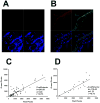
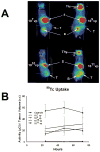
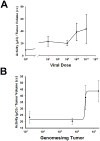
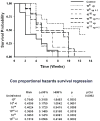
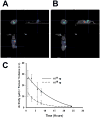
References
-
- Jemal A, Bray F, Center MM, Ferlay J, Ward E, Forman D. Global cancer statistics.[Erratum appears in CA Cancer J Clin, 2011 Mar–Apr;61(2):134] CA Cancer J Clin. 2011;61(2):69–90. - PubMed
-
- Chiocca EA, Broaddus WC, Gillies GT, Visted T, Lamfers ML. Neurosurgical delivery of chemotherapeutics, targeted toxins, genetic and viral therapies in neuro-oncology. J Neurooncol. 2004;69(1–3):101–17. - PubMed
-
- McCormick F. Cancer gene therapy: fringe or cutting edge? Nat Rev Cancer. 2001;1(2):130–41. - PubMed
-
- Yamamoto M, Curiel DT. Cancer gene therapy. Technol Cancer Res Treat. 2005;4(4):315–30. - PubMed
-
- Carrasco N. Iodide transport in the thyroid gland. Biochim Biophys Acta. 1993;1154(1):65–82. - PubMed
Publication types
MeSH terms
Substances
Grants and funding
LinkOut - more resources
Full Text Sources
Medical
Molecular Biology Databases

